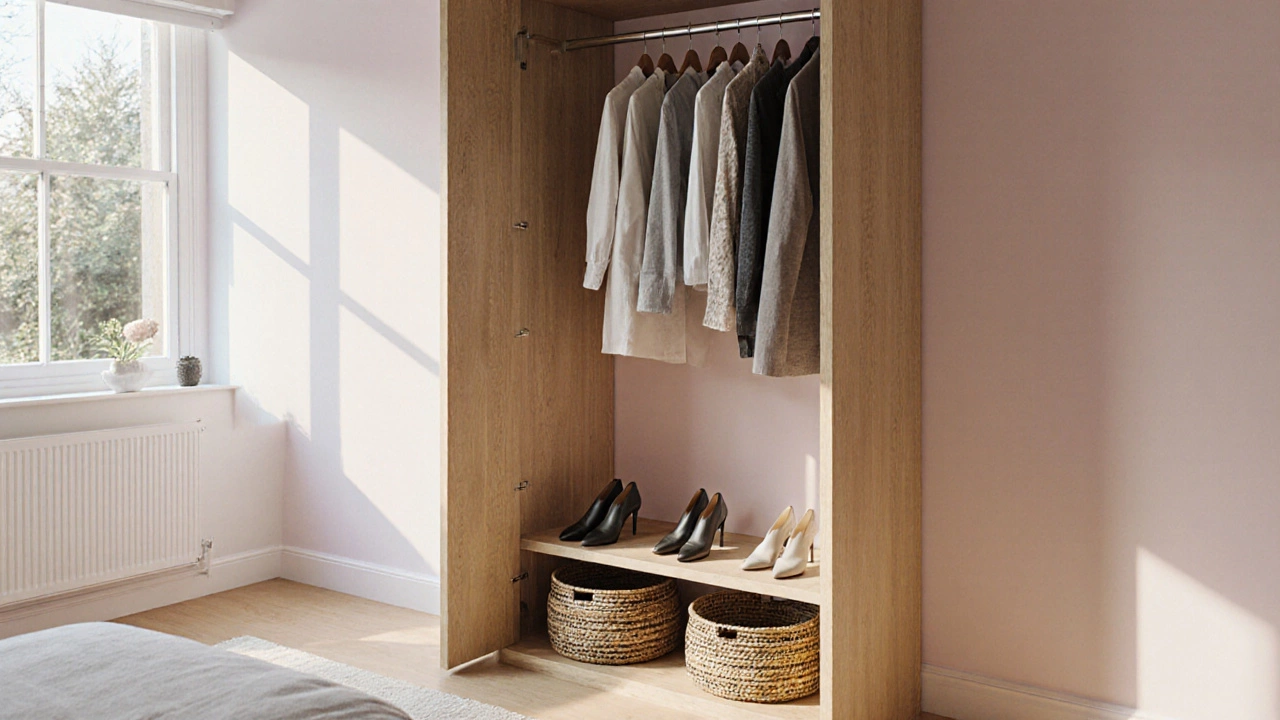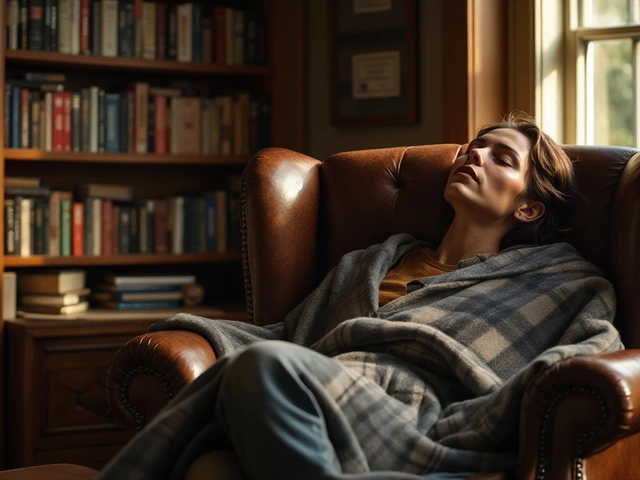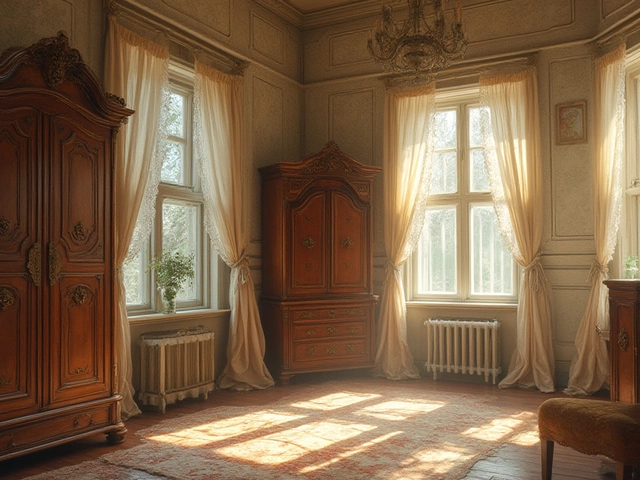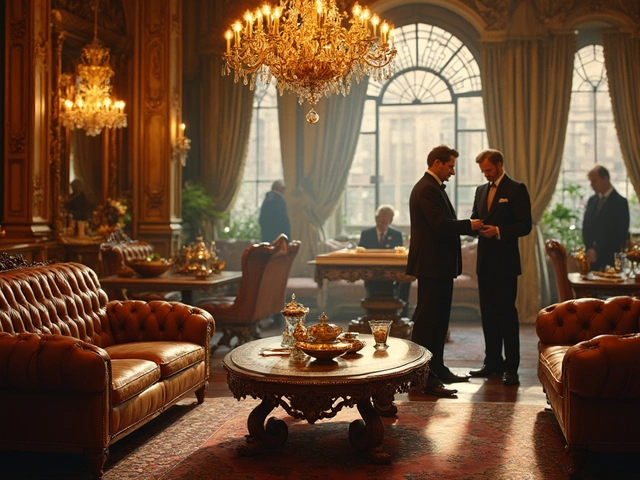Wardrobe Style Calculator
Which Open Wardrobe Solution is Right for You?
Answer these quick questions to get a personalized recommendation based on your space and needs.
When you picture a wardrobe, the first thing that pops into mind is a tall cabinet with hinged doors. But what if the doors are gone? The piece you end up with is commonly referred to as an open wardrobe. In this guide we’ll unpack the exact terminology, explore the different styles that fall under the doorless umbrella, and help you decide when an open storage solution makes sense for your home.
What’s the official term?
Open wardrobe is a type of freestanding storage unit without doors, designed to hold clothing and accessories in an exposed layout. The phrase "wardrobe without doors" is a descriptive shortcut, but in the furniture industry the name open wardrobe is the standard label. You’ll also hear the terms "doorless wardrobe" or "open closet" used interchangeably, especially in interior‑design blogs.
Different flavors of doorless wardrobes
- Walk‑in closet - a spacious, room‑like area often built into a bedroom. It may include hanging rods, shelves, and drawers, all fully exposed.
- Clothes rack - a simple metal or wooden frame with a horizontal bar for hanging garments. Frequently used in temporary settings or boutique displays.
- Freestanding wardrobe - a standalone unit that may have shelves or drawers but deliberately omits doors for a minimalist look.
- Armoire - traditionally a tall, elegant cabinet with doors, but modern interpretations sometimes feature an open‑front version for a vintage‑industrial vibe.
- Clothes chest - a low, drawer‑based storage piece that keeps items out of sight without needing doors.
- Storage cabinet - a versatile box‑like unit that can be configured with open shelving, often used in hallways or entryways.
Why choose an open wardrobe?
- Visibility. You see every garment at a glance, which speeds up daily outfit decisions.
- Air circulation. Clothes stay fresher because air can move freely, reducing musty smells.
- Stylistic impact. An open layout showcases curated pieces-think designer shoes, colorful scarves, or vintage bags-turning storage into décor.
- Easy access. No fiddling with hinges or handles; you just pull what you need.
- Flexibility. Open units can be re‑arranged, expanded with extra shelves, or combined with other furniture pieces.
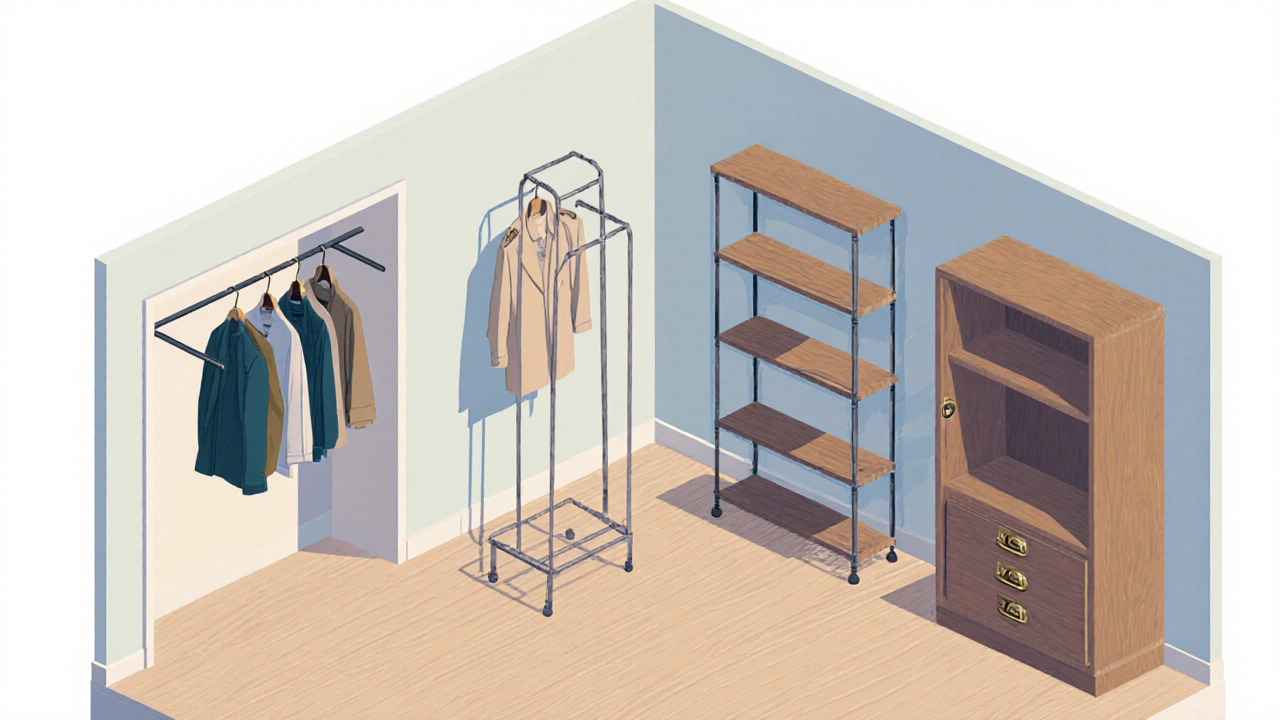
When a traditional wardrobe still wins
Doors aren’t just a design flourish; they serve practical purposes. If you live in a humid climate, keeping clothing behind doors can protect against dust and moisture. Small bedrooms may benefit from a compact, door‑enclosed unit that hides clutter. Children’s rooms often need doors to keep toys out of reach. In short, when concealment, protection, or space‑saving outweigh the visual benefits, stick with a conventional wardrobe.
Styling an open wardrobe
- Color coordination. Arrange items by hue to create a rainbow effect or keep a neutral palette for a sleek look.
- Layered shelving. Use varying shelf heights to separate tops, bottoms, and accessories.
- Decorative baskets. Store scarves or seasonal pieces in woven baskets that add texture while keeping the openness intact.
- Lighting. Install subtle LED strips underneath shelves; a warm glow accentuates fabrics and reduces the feeling of a bare wall.
- Mirrored back panels. A mirrored back not only adds depth but also lets you see outfits from multiple angles.
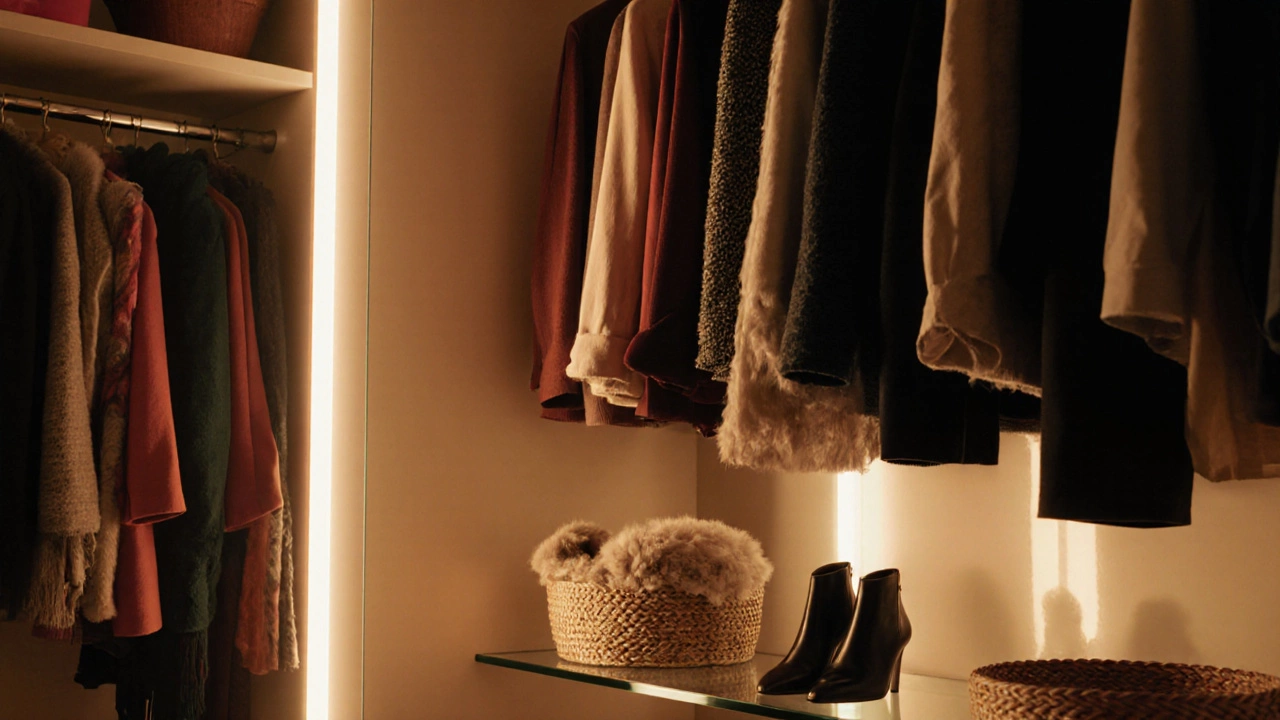
Comparison: Open Wardrobe vs Traditional Wardrobe vs Walk‑in Closet
| Feature | Open Wardrobe | Traditional Wardrobe | Walk‑in Closet |
|---|---|---|---|
| Doors | No | One or two hinged doors | None (room‑scale) |
| Space required | Footprint of a single unit; can fit in smaller rooms | Similar footprint but adds door swing space | Requires a dedicated room or large alcove |
| Visibility | Full exposure of garments | Hidden behind doors | Open shelving, full view |
| Air flow | Excellent | Limited, can trap humidity | Excellent, often with built‑in vents |
| Cost | Often lower; simple construction | Medium; hardware adds price | High; custom construction |
| Customizability | High - add shelves, baskets, lighting | Moderate - interior fittings optional | Very high - can incorporate islands, drawers, dressing mirrors |
Tips for buying the right doorless solution
- Measure width, height, and depth carefully; open units need enough clearance for hanging rods.
- Choose sturdy material-solid wood or metal frames last longer than particleboard.
- Check weight capacity of shelves; heavy coats require reinforced brackets.
- Look for modular systems that let you add or remove components as your wardrobe evolves.
- Consider a back panel (mirrored or painted) to hide wall imperfections.
Frequently Asked Questions
Is an open wardrobe the same as a walk‑in closet?
Not exactly. An open wardrobe is a single piece of furniture without doors, while a walk‑in closet is an entire room or alcove dedicated to clothing storage. Both are doorless, but the scale and built‑in features differ.
Will my clothes collect dust without doors?
Open units can attract dust, but regular cleaning and good air circulation keep fabrics fresh. Adding a breathable curtain or a removable mesh cover can help if you’re especially sensitive.
Can I install an open wardrobe in a small apartment?
Absolutely. Because it eliminates door swing, an open wardrobe fits snugly against a wall and works well in tight spaces. Pair it with slim‑profile shelving to maximize usable area.
What height should I choose for hanging clothes?
Standard hanging height is about 65-70inches (165-180cm) from the floor to the rod. If you store longer coats, raise the rod to 80inches or add a double‑stack system.
Is an open wardrobe suitable for children’s rooms?
Yes, as long as you keep low shelves and keep small items in bins to avoid choking hazards. The open view helps kids learn to organize their own clothes.
